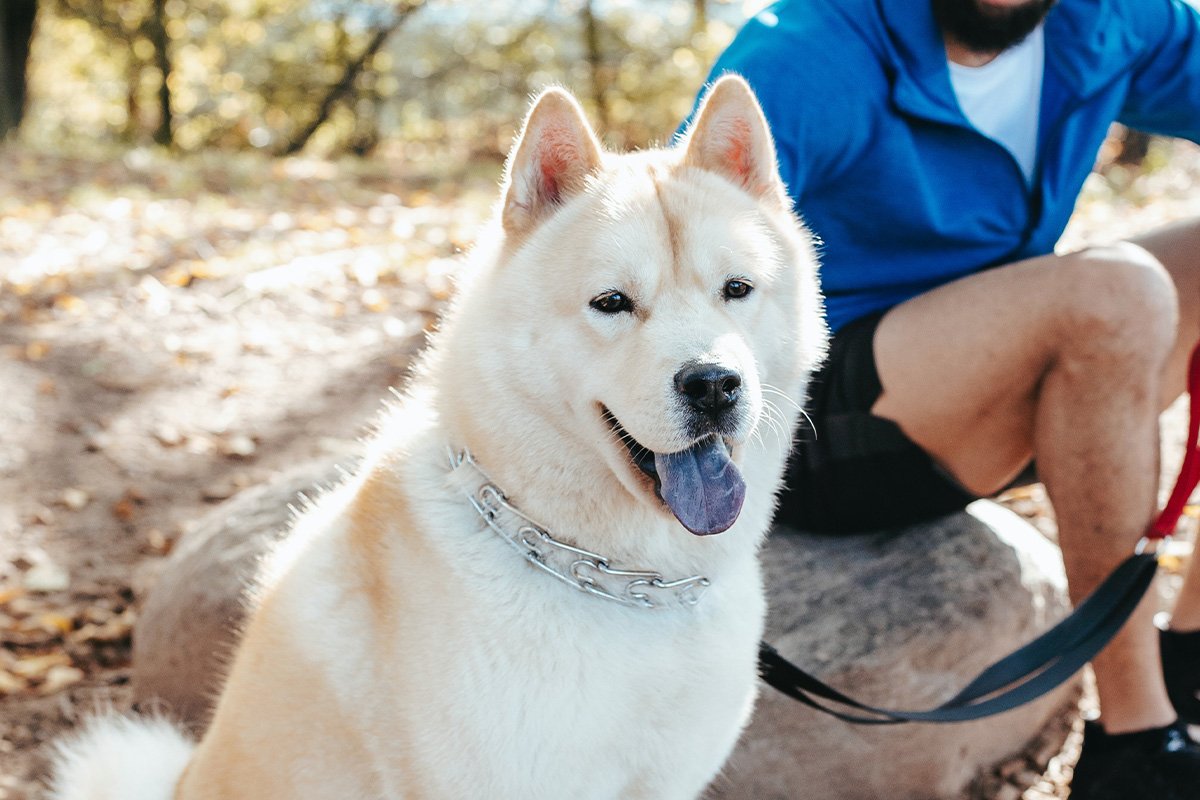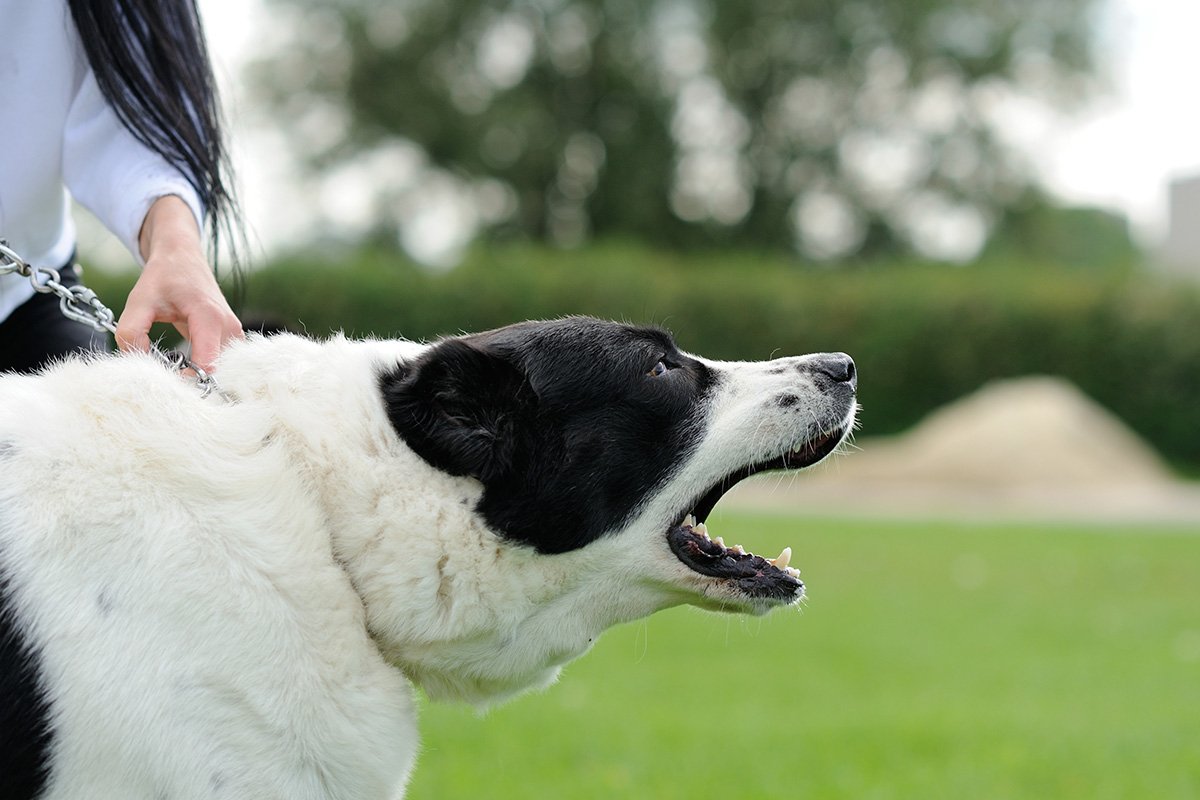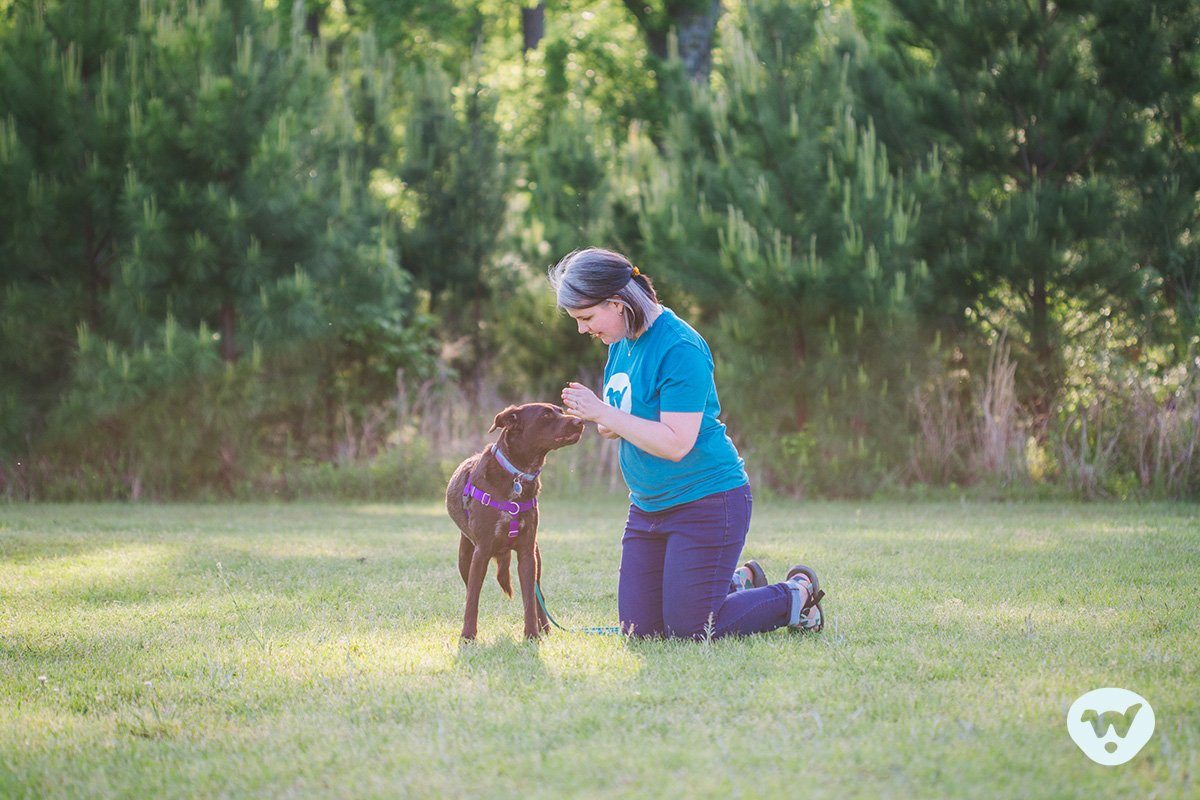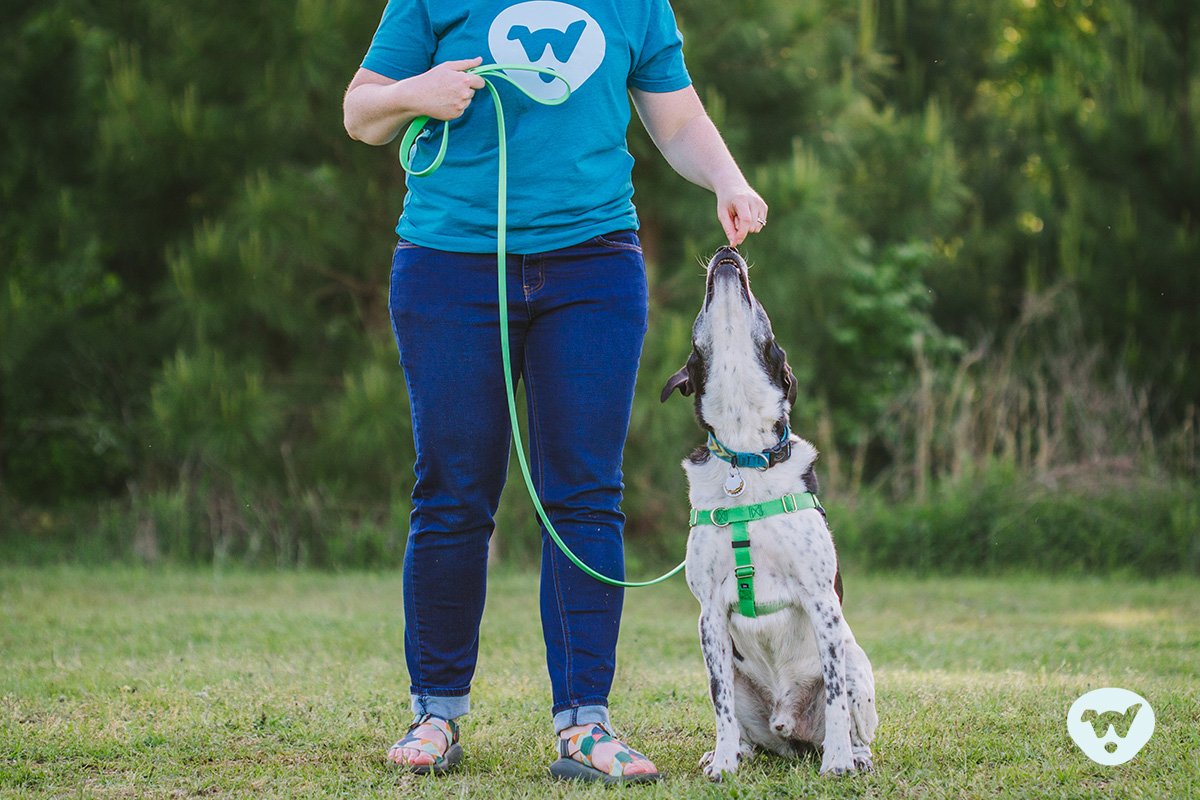The Truth About Dog Training Tools
Electronic collars are an aversive training tool that causes fear, anxiety, and stress in dogs.
Learn how training tools work so you can make the best choice for your dog.
The dog training industry is unregulated, which means that anyone can call themselves a trainer and there is no regulation on the methods or tools that trainers are allowed to use. Dog guardians should do their homework when picking a trainer (I have a blog about that!), and part of doing that is knowing what tools they use to train.
Training tools can fall into several categories, but in the eyes of your dog they are either positive or negative. Tools that fall into the negative category are called aversive tools, or just “aversives.” By definition, “aversive” means to cause a strong dislike. Commonly used aversive tools are prong collars, shock collars, choke chains, and various corrective devices. The reason aversive tools cause behavior change is because the dog works to avoid any unpleasant feedback from the tool. Ultimately, these tools suppress behaviors and cause fallout ranging from avoidance to severe aggression. What they don’t do is teach your dog what you want.
There are plenty of tools on the market that are sold as “training” tools, but the buyer should be aware of how they work. Aversive tools and outdated methods are a recipe for disaster. Using these tools and methods is such a welfare issue to our dogs, that the American Veterinary Society of Animal Behavior has published a position statement about humane dog training that I highly recommend every dog guardian read.
Prong collars are used to “correct” dog’s behavior by providing painful feedback to the dog.
Aversive Dog Training Tools
Prong or “Pinch” Collars
Prong collars, also called pinch collars, are metal collars made of connecting spikes which are pointed inward on the dog’s neck. The collar attaches to the leash through a connection point that enables the handler to tighten or loosen the collar depending on the leash tension. The pressure on the collar creates painful physical feedback for the dog on their neck. Some trainers will use collar corrections, harshly “popping” the leash to give the dog a correction for behavior that they do not want. Other trainers will apply pressure and wait for the dog to move and relieve themselves of the pressure on their necks. In every use case, the collar's efficacy relies on painful to be applied to the dog’s neck via the prong collar.
Shock Collars, Electronic Collars, “E-Collars,” or “Tens” Collars
Shock collars (also known as electronic collars, e-collars, or tens collars) are remote control devices that deliver anywhere from a beep and vibration to a painful electrical shock when the dog’s handler activates the device through a remote control. Shock collars are often marketed under different names but the purpose is the same—to provide your dog with unpleasant and painful feedback that they will work to avoid.
Choke collars & choke Chains
These training collars do exactly what they sound like—they tighten down on your dog’s neck (with no end–these collars do not have a physical “stop” so they will tighten as much as physically possible on a given dog’s neck)! Choke chains are another aversive training tool through which the handler can provide corrections to their dog. As with prong collars and shock collars, these training collars “work” by providing the dog painful pressure on their neck which they work to avoid.
Corrective Devices
Several miscellaneous items fall into this category, and the word corrective describes exactly how these devices work. Some commonly used ones are air horns, ultrasonic devices, electronic mats, small bags with chains inside, cans full of coins, spray bottles, citronella collars, or any other device whose purpose is to stop unwanted behavior. These tools range in intensity— from spraying your dog with water to throwing a small bag full of chains at your dog.
Aversive tools, like prong collars, can cause your dog to bark and lunge in reaction to other dogs and people. These dogs don’t need corrections, they need empathy and humane training.
The Risks of Aversive Dog Training Tools
There are several problems with using these aversive training tools. First, training by giving your dog only negative feedback doesn’t teach your dog what you want them to learn.
Do you want to teach your dog not to pull to go see other dogs on a walk? With aversive tools, you would give your dog a correction each time they pulled to another dog. But did you really teach your dog not to pull to the other dog? No. Now you have your dog trying to guess how to best avoid the collar correction.
So what should you do instead? Teach your dog what you do want! You need to teach your dog a behavior that is incompatible with pulling. What about a sit? Your dog cannot pull to another dog if they are seated. Pulling and remaining seated are incompatible behaviors. A sit may not be practical in every application, so here’s another reason to teach your dog polite leash walking. If you teach them how to walk nicely on leash in the presence of distractions (hello, other dog!), and you’ve built a large reinforcement bank for that behavior, you’re likely to have a dog that isn’t pulling to go see other dogs because it’s far more valuable for them to stay with you instead.
Second, there is no way for you to control what association is made between the pain from the training collar and things in the environment. Let’s use other dogs as the “thing in the environment” for this example. Your dog may LOVE other dogs! But that may mean they pull to go see them on walks. So, your trainer instructs you to put a prong collar on your dog to stop their pulling. It may seem to work at first, because your dog is trying to avoid the painful feedback, but you start to notice now that instead of just pulling to the other dog that your dog is barking and lunging at the other dog. What the heck happened?
Your dog has realized that other dogs mean pain. After all, that’s how these collars work! So now instead of your dog wanting to go see the other dog, they want them to go away because they make your dog hurt! They are barking and lunging to create distance between themselves and the other dog. Because to them, the other dog inflicts pain.
The good news is that you can train your dog without pain through positive reinforcement! And science has proven time and time again that it’s a more effective way to train your dog!
Clicker training your dog reduces fear, anxiety, and stress through creating positive experiences.
Positive Reinforcement Training Tools
To reinforce a behavior is to increase its frequency. Positive reinforcement, by definition, means to add something, like a reward, (that’s the positive part) to reinforce a behavior. Common tools found in a positive reinforcement dog trainer’s toolbox include a clicker (or marker word), rewards (treats, toys, or whatever your dog finds valuable), a treat pouch, and a harness!
Clickers (or Marker Words)
Clickers (or marker words, like an enthusiastic “yes!”) are used to mark the end of a behavior, and tell your dog that what they just did is going to be reinforced. When used properly, the click also becomes an indication to your dog that a reward (treat or play) is heading their way! The wonderful thing about clicker training is that it doesn’t hurt your dog, and through clicker training, you teach them what you want them to do. What gets reinforced gets repeated! For more information about clicker training, check out my blog.
Rewards
Rewards are what we use to reinforce behavior that we like! Your dog gets to pick what is reinforcing to them, so test out some different rewards to see what is valuable to your dog. Some dogs may work for their kibble, while other dogs may have more refined taste and require higher values of food. There are also dogs who will work for toy play, like a great game of tug-o-war! If your dog won’t take the reward you offer to them, your reward may not be of enough value to overcome distractions around you, or your dog may be over threshold (in reactive dog language, this means too close to their trigger). Make a “pay scale” for your dog as you find what is valuable to them!
Boogie’s Pay Scale, graphic courtesy of Lili Chin. www.doggiedrawings.net
Treat Pouch
For ease of treat delivery, I always recommend clients keep a treat pouch on their bodies. At least for the first few months of training until we wean the dog off of having a treat with each successful repetition. My current favorite treat pouch is the Rapid Rewards Pouch from The Doggone Good Clicker Company. A carpenter’s apron also works great, and each of my Wonderdog Manners students gets a Wonderdog Training branded apron when they begin lessons! The Trainer’s Pouch also makes nice silicon treat pouches which are easily washed and great for messier treats (I’ve also used this one for horse training sessions and love how much feed it can hold!).
Harness
When it comes to walking your dog, nothing beats training loose leash walking. But a harness is my favorite way to take pressure off of your dog’s sensitive neck. Don’t be fooled by the words “no pull” when looking at harnesses. Not pulling is a skill to be taught to your dog! However, harnesses do not apply pressure to sensitive areas on your dog, like their neck, and can be a great tool to add to your walk! My favorite harness is the Two Hounds Design Freedom No-Pull Dog Harness.
Hossa loved positive reinforcement dog training and was always an engaged learner!
The Benefits of Positive Reinforcement Dog Training
Makes training fun
Positive reinforcement dog training uses the science of how dogs learn to create behavior change. Since the training is reinforcing for the dog, it becomes fun and your dog will look forward to your training sessions!
Creates a confident dog
Positive reinforcement dog training makes confident dogs! Dogs trained with positive reinforcement are not afraid to try new things for fear of punishment at doing the wrong thing. They become eager learners who want to participate in training sessions!
Reduces fear, anxiety, and stress
Using fun, positive reinforcement dog training methods can actually reduce fear, anxiety, and stress because your dog learns that interactions with you predict good outcomes for them.
Creates a bond with your dog
Positive reinforcement dog training helps you bond with your dog and create a relationship based on trust and respect, not force, fear, or intimidation.
easy for the entire family
Anyone in your family can help train your dog because positive reinforcement dog training does not rely on the ability of a handler to “overpower” or “out-muscle” your dog in order for them to learn. All family members, even children, can participate in the simple act of reinforcing your dog’s good behavior.
It’s never to late to switch to positive reinforcement dog training!
All dogs can learn new tricks! Does your dog bark and lunge at other dogs on your walk? I can provide relief through a behavior modification program! Have you been using a prong collar to teach loose leash walking, but something about using the collar doesn’t quite sit right with you? Trust your gut—there is a better way to train without pain!
The paw-sibilities are endless with positive reinforcement dog training! Together, we can help your dog reach their full potential!
ARE YOU LOOKING FOR A POSITIVE REINFORCEMENT PUPPY TRAINER IN NORTHERN VIRGINIA?
Contact me to get started training your Wonderdog!






